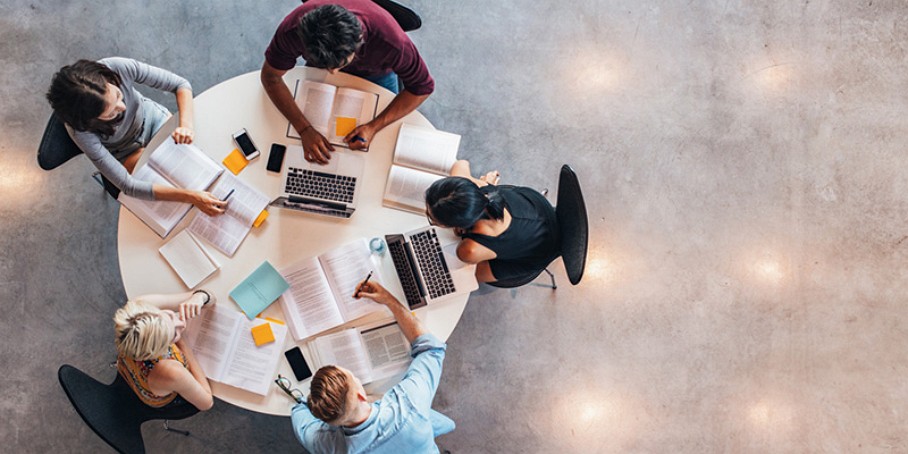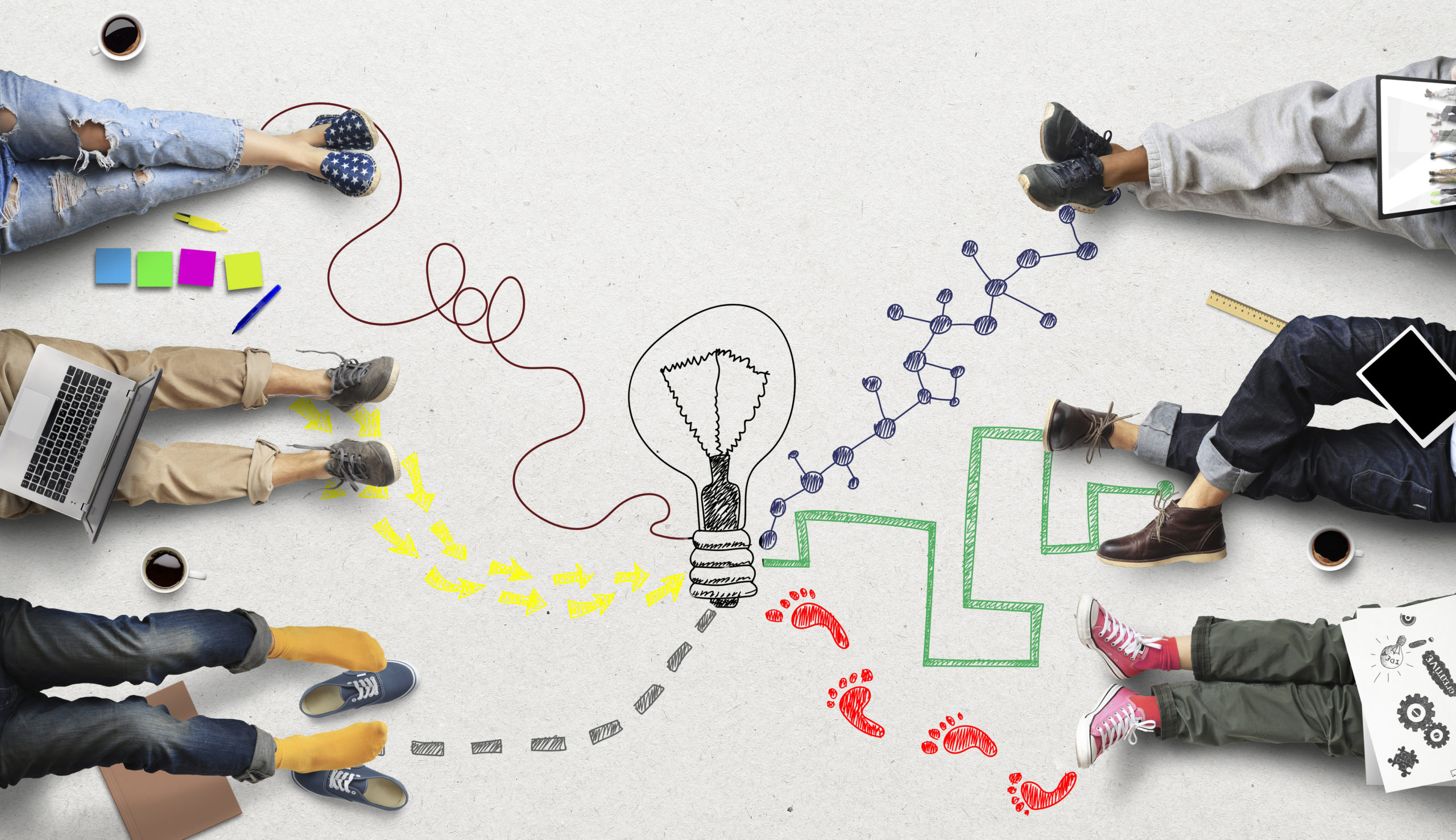Even with the best app design software and other tools, you still need collaboration from other team members to develop effective designs. Here are ways you can better your creations through teamwork.
What is Design Collaboration?
If you’re looking to kick off your project to a good start, generate new ideas around a, or spend less time on a design, then collaboration is the best way to go. It’s a design approach that depends on input from different stakeholders to develop intuitive and user-friendly designs.
What is the Collaboration Process?
The collaboration process is the steps the design team takes to create a complete design from an abstract idea. These steps may vary from one design team to the next, depending on project goals and the number of people participating. This outline shows the steps of collaboration from a typical business.

-
The marketing team develops a creative brief
The process starts with the marketing department identifying a design need and creating a creative brief for the design team. The brief contains all the necessary information about the product, including useful references, due date, dimensions, and file formats. They then deliver it to the design team.
-
The design team reviews and accepts the brief
The next step is approval from the design team. This step involves the designers compiling all their questions, concerns, and doubts and sending them to the marketing team. It may be a long process since designers only start working on the project when the creative brief is updated to the maximum and everyone is on the same understanding level.
-
The design team delivers the first draft
Once the design team has confirmed the creative draft, they produce a draft that corresponds to the creative brief’s specifications and timeframes. They then send their first draft to the marketing team for assessment and review.
-
The marketing team provides feedback
After scrutinizing the first draft, the marketing team gives their feedback. It’s essential to keep response as clear and actionable as possible as this eliminates confusion and sets the project off into a flawless and steady gear.
-
Feedback incorporation
The designers then make adjustments to the creation as appropriate. This time, they work diligently and try to be accurate as much as possible to ensure that the next draft factors in every issue the marketing team raised. This step and the previous one may repeat several times until the marketing team is satisfied.
-
Submission of the final draft
Once the draft satisfies the marketing team, the designers proceed to create a final draft and submit it as per the brief’s requirements.
How Collaboration Makes Better Design
-
Lowers chances of developing poor designs
Many eyes on a project help identify errors and flaws that you couldn’t notice would you work alone.
-
Saves time and resources
Working and correcting errors at every stage of the design eliminates the time and cost of dealing with expensive mistakes after completing the project.

-
Enhances functionality of the product and user’s satisfaction
A stakeholder’s experience with the design gives you a clue how your product will interact with the end-user. That way, you can make adjustments and optimize it to augment usability and functionality.
-
Offers room for brainstorming ideas and solutions early
You can collectively think about solutions and create better ideas at the right stage of production.
Any team looking for better results should embrace collaboration. Engaging in challenging conversations expands your knowledge, boosts your skills, and develops a stronger and powerful group.
